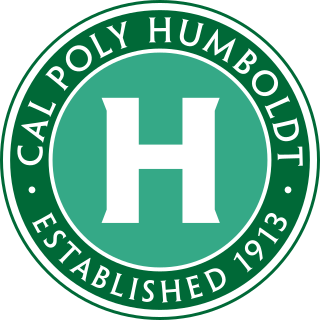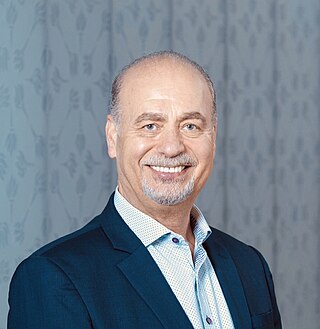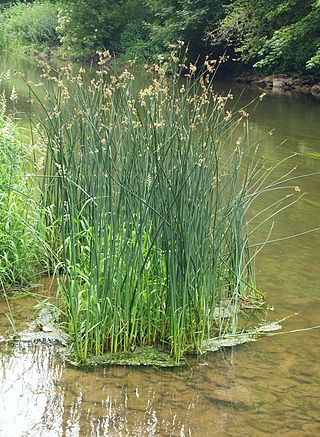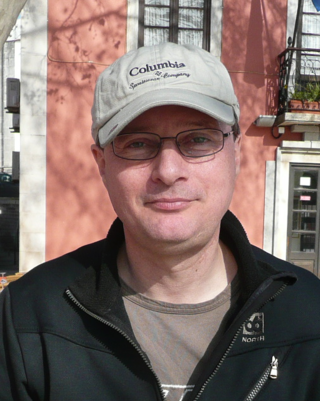Related Research Articles
Environmental engineering is a professional engineering discipline related to environmental science. It encompasses broad scientific topics like chemistry, biology, ecology, geology, hydraulics, hydrology, microbiology, and mathematics to create solutions that will protect and also improve the health of living organisms and improve the quality of the environment. Environmental engineering is a sub-discipline of civil engineering and chemical engineering. While on the part of civil engineering, the Environmental Engineering is focused mainly on Sanitary Engineering.

Arcata is a city adjacent to the Arcata Bay (northern) portion of Humboldt Bay in Humboldt County, California, United States. At the 2020 census, Arcata's population was 18,857. Arcata was first founded in 1850 as Union, was officially established in 1858, and was renamed Arcata in 1860. It is located 280 miles (450 km) north of San Francisco, and is home to California State Polytechnic University, Humboldt. Arcata is also the location of the Arcata Field Office of the Federal Bureau of Land Management, which is responsible for the administration of natural resources, lands and mineral programs, including the Headwaters Forest, on approximately 200,000 acres (810 km2) of public land in Northwestern California.

California State Polytechnic University, Humboldt is a public university in Arcata, California. It is one of three polytechnic universities in the California State University (CSU) system and the northernmost campus in the system.

Arcata Wastewater Treatment Plant and Wildlife Sanctuary is an innovative sewer management system employed by the city of Arcata, California.
Paul V. Roberts was a prominent environmental engineer. He made major contributions to environmental engineering by applying fundamental principles of mass transport and chemistry to drinking water treatment and wastewater reclamation research. An author of more than 200 scientific publications, he was a member of the National Academy of Engineering and the Swiss Academy of Sciences.

Presented annually since 1991, the Stockholm Water Prize is an award that recognizes outstanding achievements in water related activities. Over the past three decades, Stockholm Water Prize Laureates have come from across the world and represented a wide range of professions, disciplines and activities in the field of water.

William Mitsch is an ecosystem ecologist and ecological engineer who was co-laureate of the 2004 Stockholm Water Prize in August 2004 as a result of a career in wetland ecology and restoration, ecological engineering, and ecological modelling.

George Tchobanoglous is an American civil and environmental engineer, writer and professor.
Johannes "Hans" van Leeuwen is educator, engineer, inventor, researcher, and entrepreneur. He is an emeritus professor of Civil, Construction and Environmental Engineering at Iowa State University and an entrepreneur in ethanol co-product development. His research and innovations have worked to solve various problems including, new water purification methods, a way of creating food and animal feed from waste, and a process in making the purest alcohol ever made.

Mark Nelson is an American ecologist and author based in Santa Fe, New Mexico. His research focuses on closed ecological system research, ecological engineering, restoration of damaged ecosystems, and wastewater recycling. The founding director of the Institute of Ecotechnics in 1973, Nelson was one of the eight original crew members of Biosphere 2 in 1991 and served as the Director of Earth and Space Applications for the project until 1994.
Kartik Chandran is an American environmental engineer at Columbia University, where he is a professor in the Department of Earth and Environmental Engineering. He primarily works on the interface between environmental molecular and microbiology, environmental biotechnology and environmental engineering. The focus of his research is on elucidating the molecular microbial ecology and metabolic pathways of the microbial nitrogen cycle. Applications of his work have ranged from energy and resource efficient treatment of nitrogen containing wastewater streams, development and implementation of sustainable approaches to sanitation to novel models for resource recovery. Under his stewardship, the directions of biological wastewater treatment and biological nutrient removal were established for the first ever time in the history of Columbia University.

Nidal Hilal DSc PhD EurIng CEng FIChemE FLSW FRSC is is an academic, engineering scientist and scientific adviser. He is a Global Network Professor at New York University and the founding director and principal investigator of NYUAD Water Research Center. He held professorships at the University of Nottingham and Swansea University in the United Kingdom. He is an emeritus professor of engineering at Swansea University and the founding director of the Centre for Water Advanced Technologies and Environmental Research (CWATER).
William Joseph Oswald was an American educator, scientist, and engineer who spent his entire academic career at the University of California, Berkeley in the departments of Civil and Environmental Engineering and Public Health. He made foundational contributions to the fields of wastewater treatment and applied phycology, or as he called it, "algology". Throughout a career spanning more than five decades, Oswald was the primary academic advisor to more than two dozen doctoral students, sat on more than 100 additional masters and doctoral thesis committees, and taught seminal courses in applied algology.

Käthe Seidel (1907-1990) was a German botanist. Seidel was the first researcher to incorporate vegetation into wastewater treatment wetlands, beginning in the 1950s. She was nicknamed "Bulrush Kate" for her use of the common bulrush, Schoenoplectus lacustris. For many years, she led the Limnological Station of the Lower Rhine based in the city of Krefeld. Focusing on studies of the Lower Rhine, the Limnological Station was associated with various institutions that became part of the Max Planck Society.
George Herbert Allen was an American ichthyologist and fisheries scientist. His father was a US consul and they family moved to Calgary with his father's posting in 1927 and George remained there until he went to the University of Wyoming as an undergraduate where he graduated before entering the military during the Second World War. After the war he completed his master's and doctorate degrees at the University of Washington in 1956, where he met his wife, Beverly Robinson. He started a position at the Cal Poly Humboldt an association which was to last over 30 years, ending his career as a professor of fisheries. At Cal Poly Humboldt he played an important part in setting up the university's oceanography program and its graduate program in fisheries. He was awarded the President's Distinguished Service Award by the Cal Poly Humboldt and had a lab and part of the Arcata Wastewater Treatment Plant and Wildlife Sanctuary was named in his honor. Allen was nicknamed "Fishy" by the Arcata, California, city hall workers he co-operated with in the creation of its pioneering artificial marsh wastewater treatment facility. The toadfish genus Allenbatrachus was named in his honor by one of his former students, David W. Greenfield, for Allen's introduction of Greenfield to ichthyology. He was survived by his wife, Beverley, and their three daughters.

Jes Vollertsen is a Danish professor of environmental studies at Aalborg University. He holds a degree in environmental engineering from 1989 from Aalborg University and began his career working in the private and public sector on topics related to polluted waters. During this time he honed his skills on environmental engineering as well as computer modelling and operation control.

Miklas Scholz is a professor in water resources engineering at Lund University. He holds the chair in civil engineering at University of Salford where he serves as a professor and the head of the civil engineering research group. Scholz is also a distinguished professor at Johannesburg University and the Central University of Technology.

Richard O. Mines Jr. is an American civil/environmental engineer, academic, and author. He is an emeritus professor of environmental and civil engineering at Mercer University. His research is primarily focused on the activated sludge process and biological nutrient removal processes, with particular emphasis on environmental engineering, water treatment, biosolids treatment, and engineering education.

Despo C. Fatta-Kassinos is a chemical and environmental engineer, academic and author. She is a professor in the Department of Civil and Environmental Engineering and the first director of Nireas-International Water Research Center (Nireas-IWRC) at the University of Cyprus (2010–2022). She has been named a Highly Cited Researcher by Web of Science, Clarivate Analytics.
Aisling Dominique O'Sullivan is an Irish–New Zealand academic, and is a full professor at the University of Canterbury, specialising in ecological engineering for removal of heavy metals and nutrients from wastewater, in urban and rural environments and as part of mining remediation.
References
- ↑ "Robert Gearheart Ph.D. Professor". Humboldt Engineering. Retrieved 30 October 2010.
- ↑ "Research Grants". Friends of the Arcata Marsh. Archived from the original on 13 May 2011. Retrieved 30 October 2010.